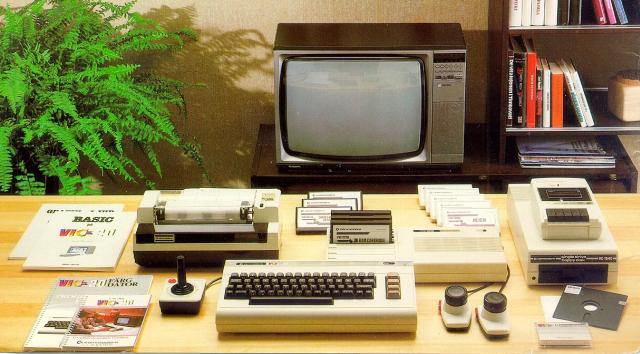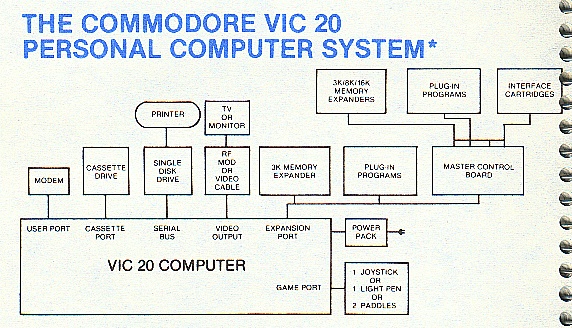Peripherals
Contents
Introduction to Peripherals for the VIC-20
A large part of the success of the VIC-20 can be attributed to the peripherals that were sold separately for use with it. Because of the VIC's many connector ports, a whole range of devices could be attached to the computer. This allowed the VIC-20 to expand its abilities and far beyond that of the basic stock model. Compared to a contemporaneous video-game console (i.e. Atari 2600 VCS), the VIC's ability to use peripherals "sold" many buyers on the machine by showing that it could do more than just play games. Many obvious and necessary peripherals were developed and sold by Commodore and third-party companies (printers, modems, tape drives) while other, more esoteric devices stretched the VIC's usefulness further than even its designers had envisioned.
Storage Devices
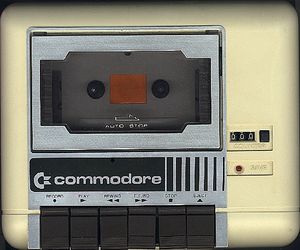
During the early 1980s, external storage devices for the VIC-20 were mostly based on magnetic media. The most popular (and cheapest) was the Compact Cassette based tape drive (datasette). The 5.25-inch floppy disk drive was a faster, although more expensive, option.
- C2N/1530 datasette & clones
- VIC-1540 disk drive
- VIC-1541 disk drive & subsequent 1541
- Quick Data Drive QC110
The VIC-20 is also compatible with other storage devices designed for the Commodore 64 and 128 which appeared after it was no longer in production.
- CMD FD-2000 and FD-4000
- CMD HD
- Commodore 1571
- Commodore 1581
- Jim Brain's uIEC family of solid state storage adapters
- Gideon Zweijtzer's 1541 Ultimate and 1541 Ultimate Plus
Altough not a storage device in itself, 64HDD is a software created by Nick Coplin that allows the use of a DOS based PC as a form of storage device for the VIC-20, 64 or 128.
Tape & Disk accelerators
Because the data transfer rate of tape storage devices like the datasette was rather slow, a few companies developed solutions to accelerate the speed at which software and data files could be loaded and saved.
Disk acceleration solutions for the VIC-20 mostly appeared long after it disappeared from the marketplace.
Tape accelerators:
- Eastern House Software The Rabbit
- Compute's Gazette Turbotape
Disk drive accelerators:
- Compute's Gazette Turbodisk (compatible with the 1541, and NTSC VIC only)
- Hypra-System (released in 1986 by Markt&Technik; works with 1541, and 1571; PAL only)
- Nicola Batista's Easy Load+ (released in 2007)
- CMD JiffyDOS for the VIC-20 (released in 2006)
Memory Expansion
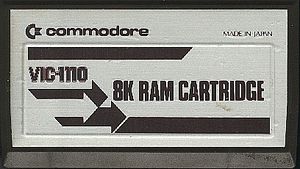
Next to the Datasette, memory expansion was another very popular peripheral upgrade for Vic 20 owners. Many people ran into limits with 3.5k of memory rather quickly; while it was sufficient for simple games and terminal emulators, more sophisticated programs required more memory. Memory expansion was achieved by plugging a RAM cartridge into the Vic 20's cartridge port. With the exception of the 3k expansion solutions, most memory expansion came in 8k blocks and changed the Vic 20's memory map. For memory expansion needs, the 8k RAM cartridge was one of the more popular solutions.
List of Memory expansion devices for the VIC-20:
- VIC-1110 8K RAM Cartridge
- VIC-1111 16K RAM Cartridge
- VIC-1210 3K RAM Cartridge
- VIC-1211A Super Expander (3K RAM expander + BASIC extension)
- Adman 16K RAM Pack
- Microtek VIM-1 8/16K Memory Expansion Module
- Data-20 16K RAM cartridge (The only known RAM expansion for the VIC-20 that uses DRAM chips)
- Stonechip Vixen
- Apropos RAMAX (24K + 3K RAM expansion with 2 cartridge slots)
- Eslapion's 32K RAM + 32K ROM Ultimate Expander (released in 2006, still in production)
- 6502dude's 32K + 3K RAM with 2 x 8 MBit ROM Mega-Cart (released in 2009)
- VIC-2009 Final Expansion, 512K RAM, 512K Flash EEPROM, SD2IEC, and RTC (released in 2009 as kit)
Printers
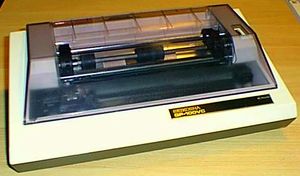
Printers allowed the output of programs, BASIC listings and documents created in a word processor to be output to paper "hard copy". Most VIC-20 printers used either daisy-wheel or dot-matrix pin printing technology. These early printers were often slow and noisy. Even so, the fact that electronic printing technology was finally small and cheap enough to be available to the home/hobbyist user wase an important milestone in home computing technology.
- VIC-1515 Graphic Printer (dot matrix impact)
- VIC-1525 Graphic Printer (dot matrix impact)
- MPS-801 printer (dot matrix impact)
- Fidelity Electronics printer (dot matrix impact)
Modems
Monitors
Input Devices
Cartridge Slot Expanders
- VIC-1010 Slot Expander
- Cardco Cardboard
- VIC-1020 expansion chassis
- HESCard 20
- Apropos RAMAX (24k + 3k RAM expansion with 2 slot expander)
Display Boards
Speech Modules
- Votrax
- Adman Speech Synthesizer
- Protecto Enterprizes Voice Synthesizer
- SpeakEasy 2000
Numeric Keypads
- Cardkey Numeric Keypad
Printer Interfaces
- Card? +G/G-Wiz/Super-G Printer Interface
- Cardco G-Wiz
- Cardco Super-G
- Xetec Super Graphix Jr.
Power Supplies
- see article on VIC-20 power supplies produced by Commodore & third-party manufacturers.
- See Hardware Modifications to create your own power supply
Data Interfaces
Data interfaces are peripherals which allow the VIC-20 to communicate and control external devices that do not use one of the VIC-20's native connectors or communications protocols. In a sense, they act as intermediaries, or translators, between the VIC-20 and the external foreign device.
- VIC-1011A RS232C adapter
- VIC-1011B RS232C adapter
- VIC-1112 IEEE-488 interface cartridge
- Handic IEEE 488 interface cartridge
